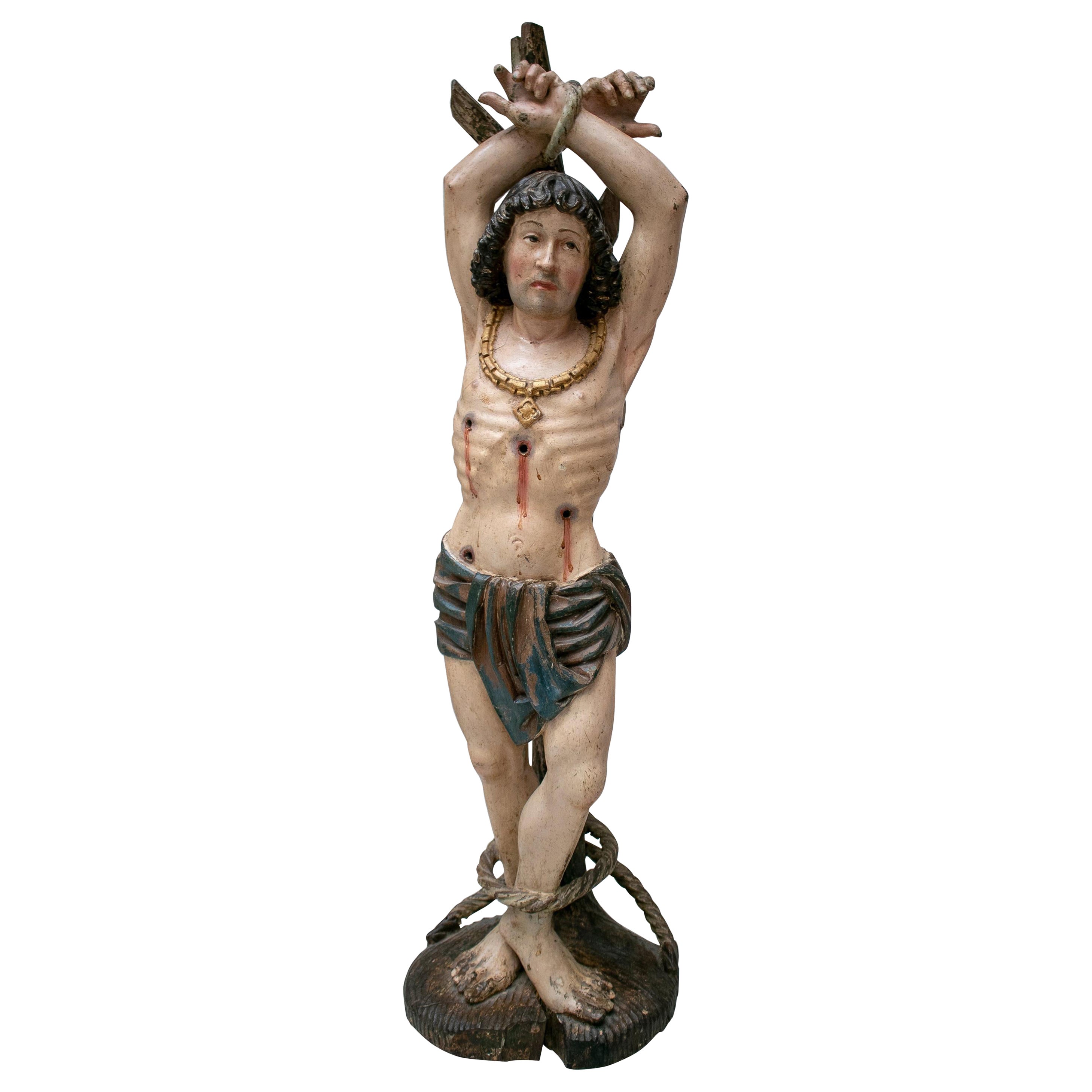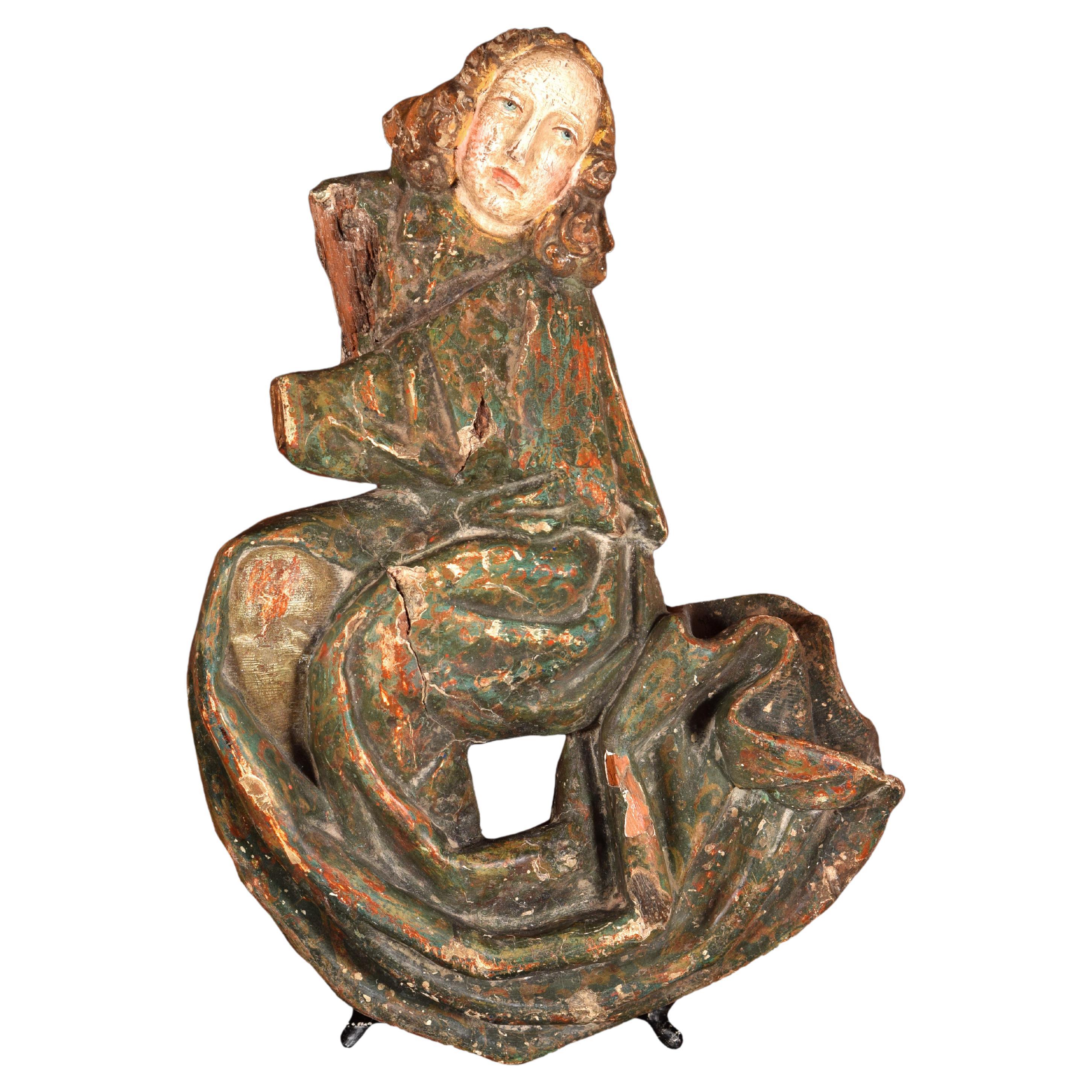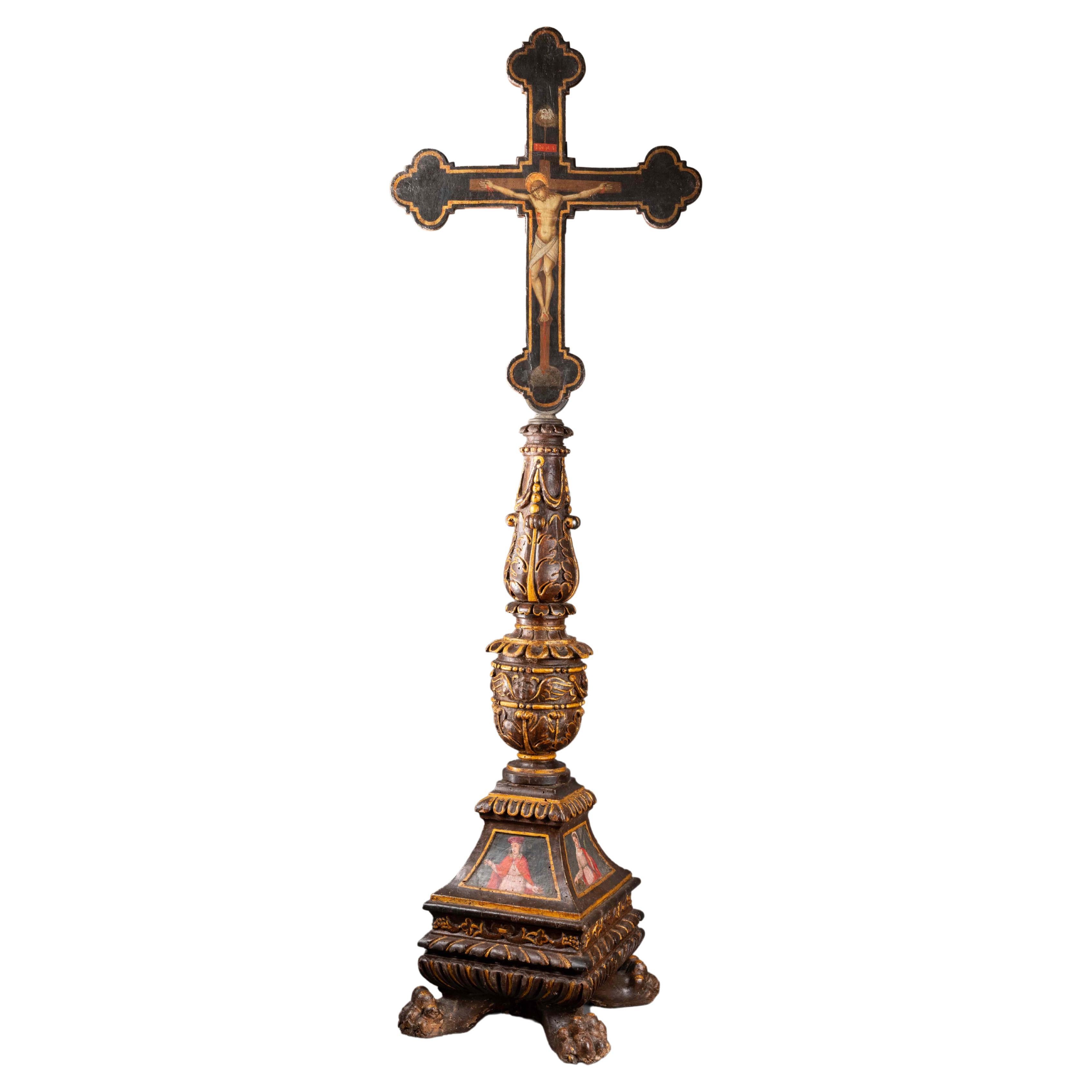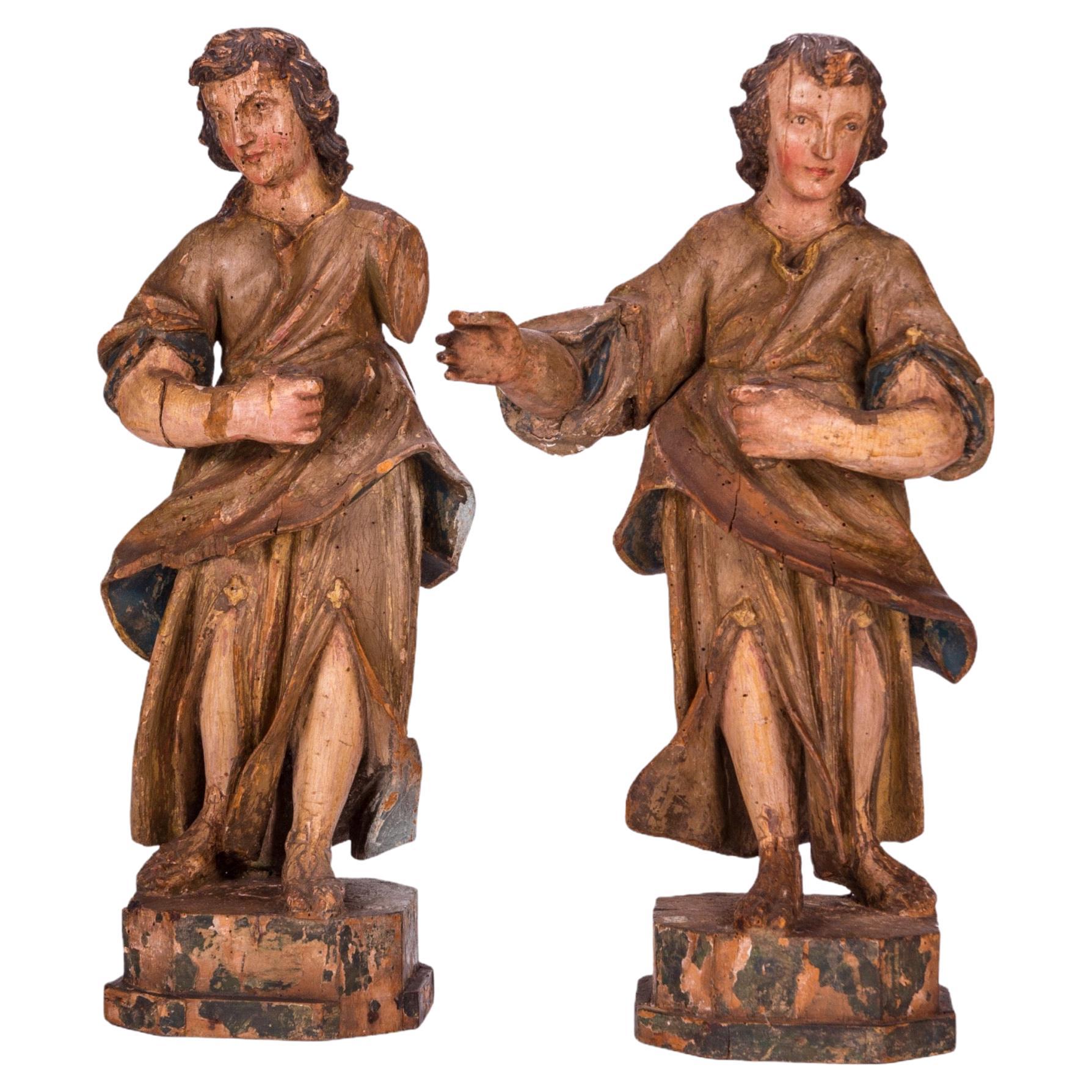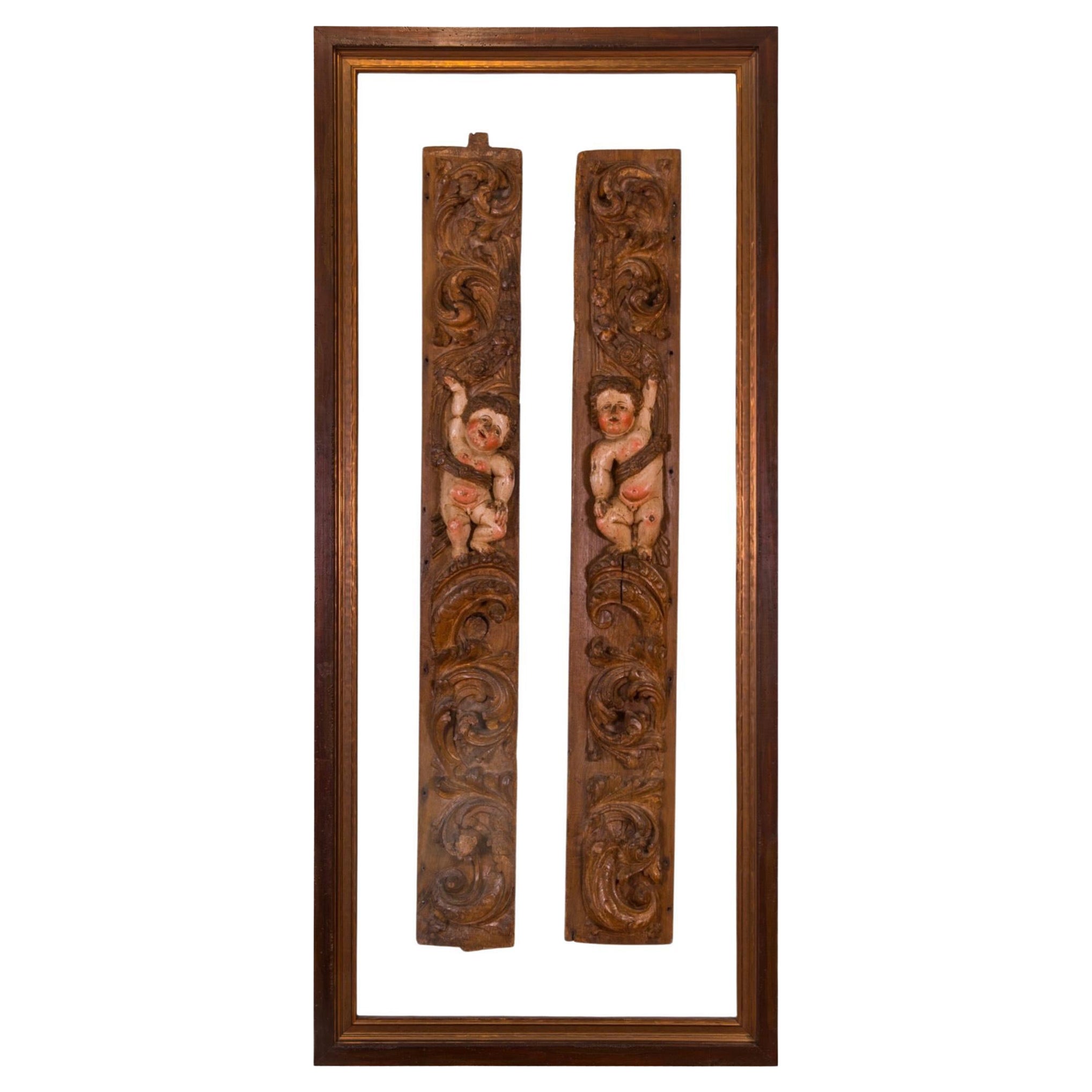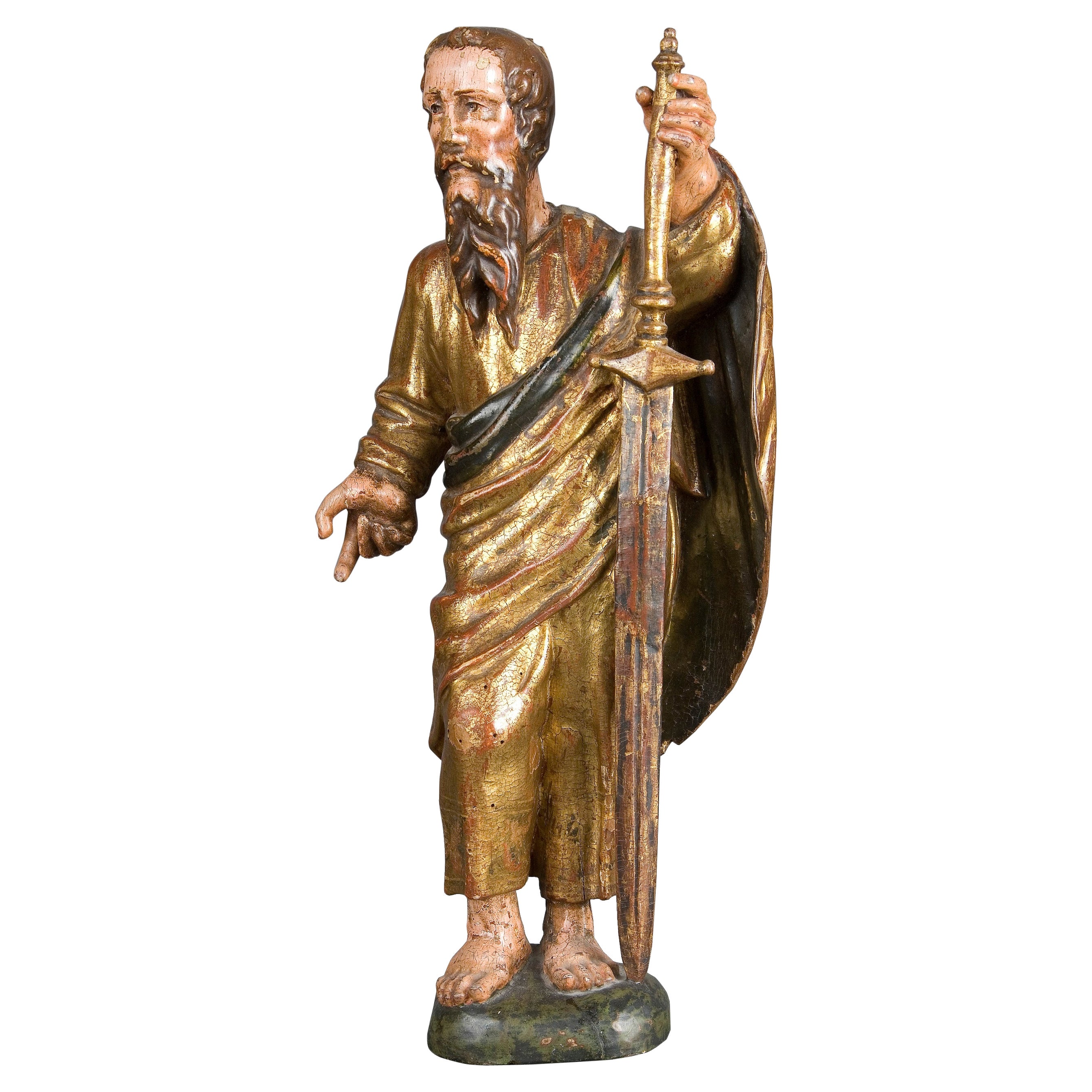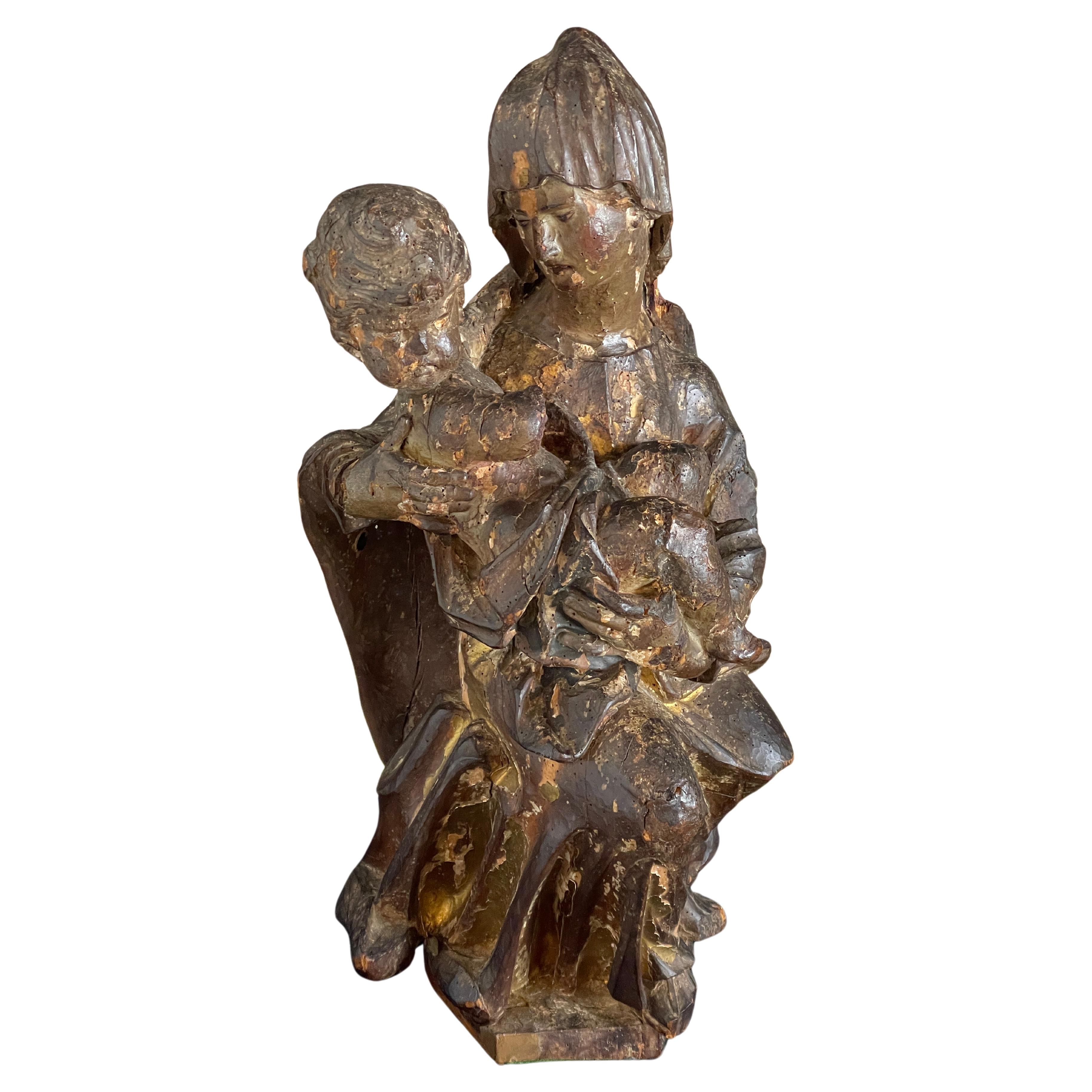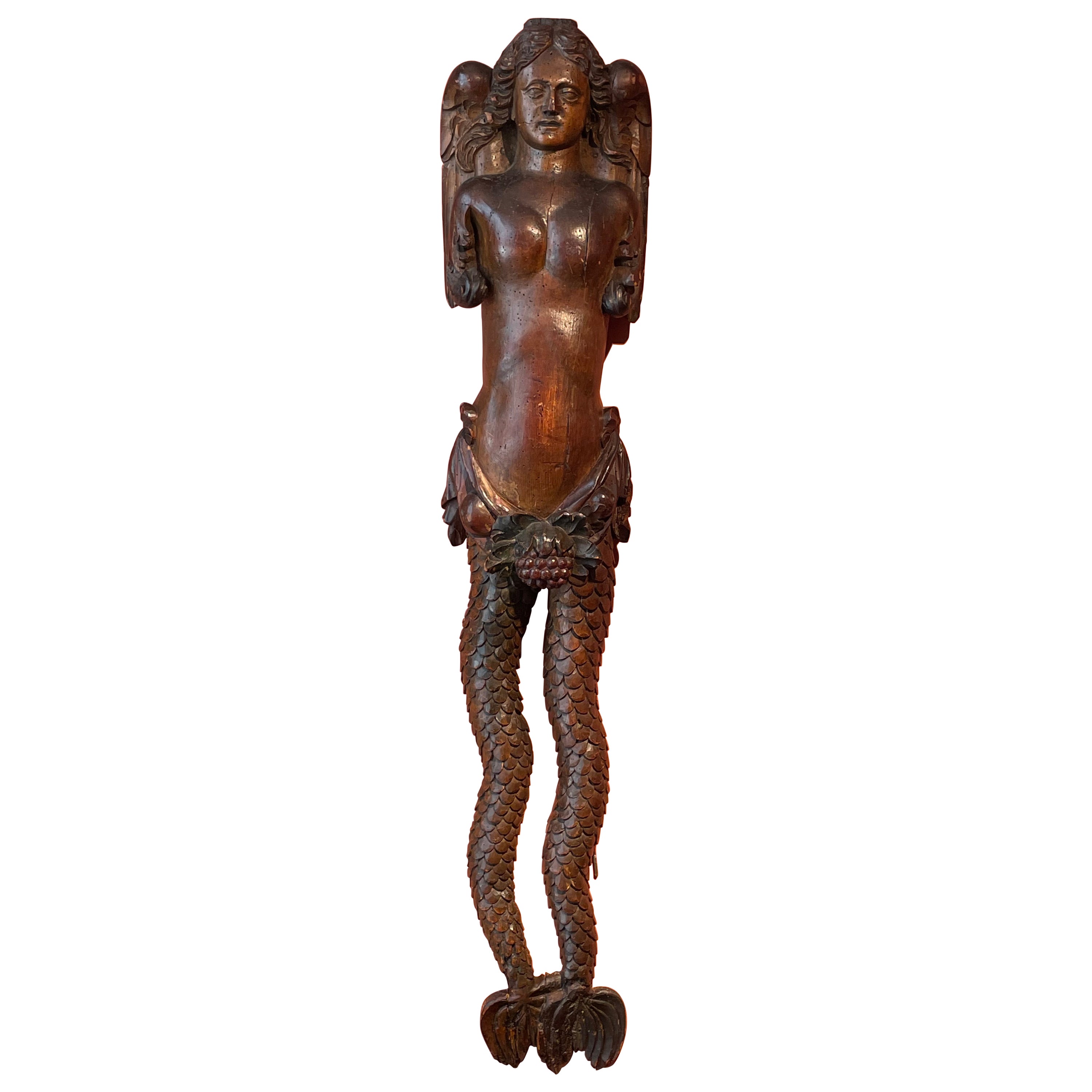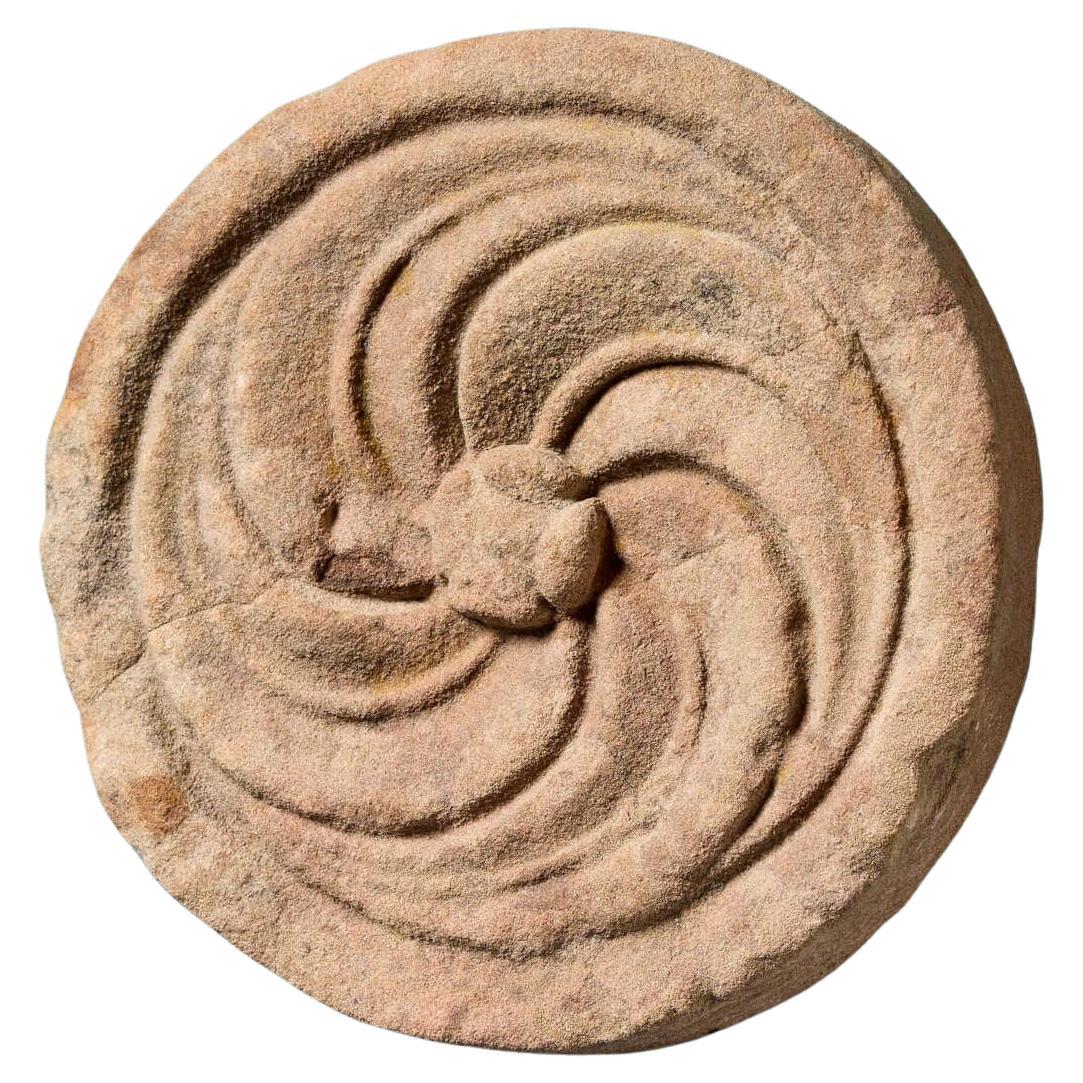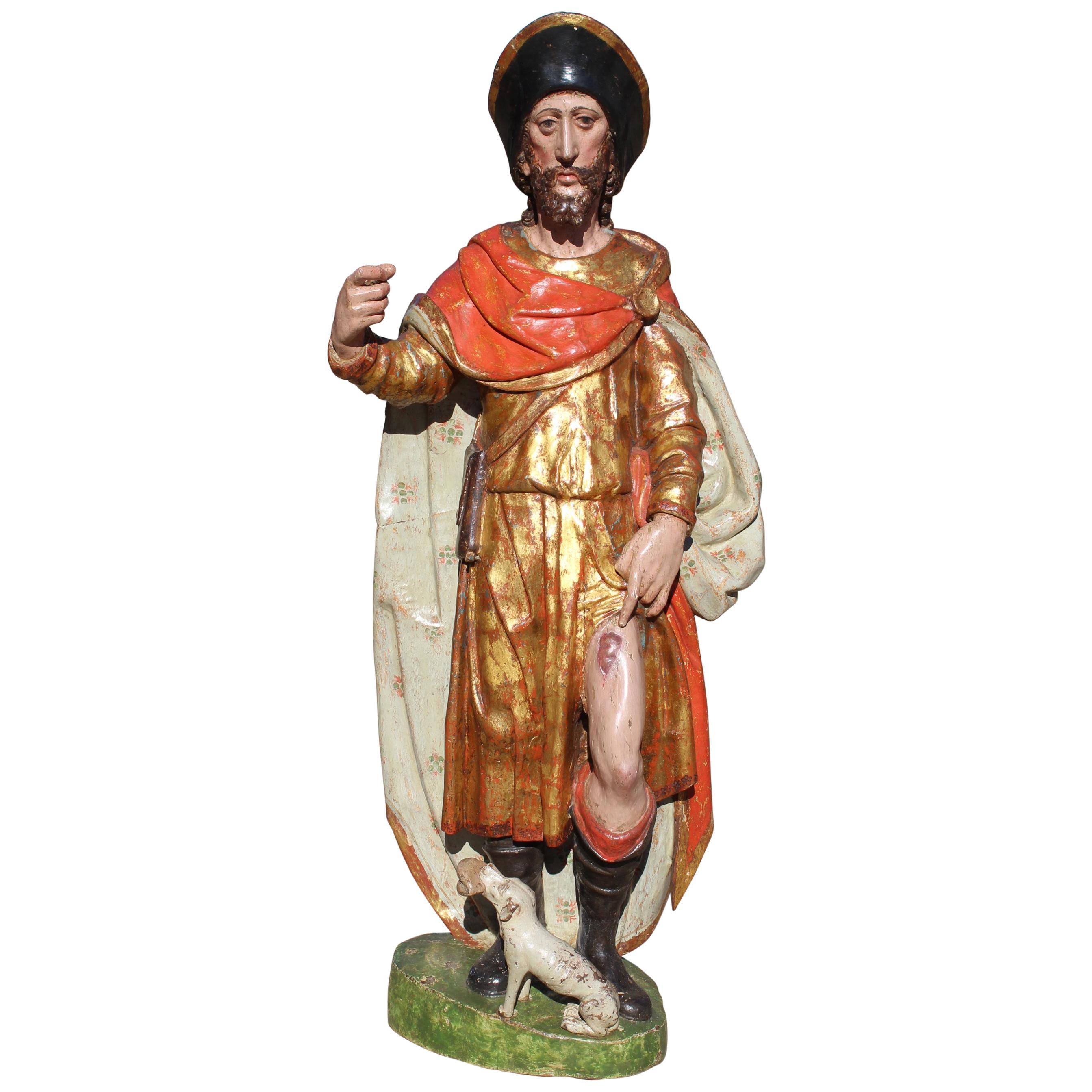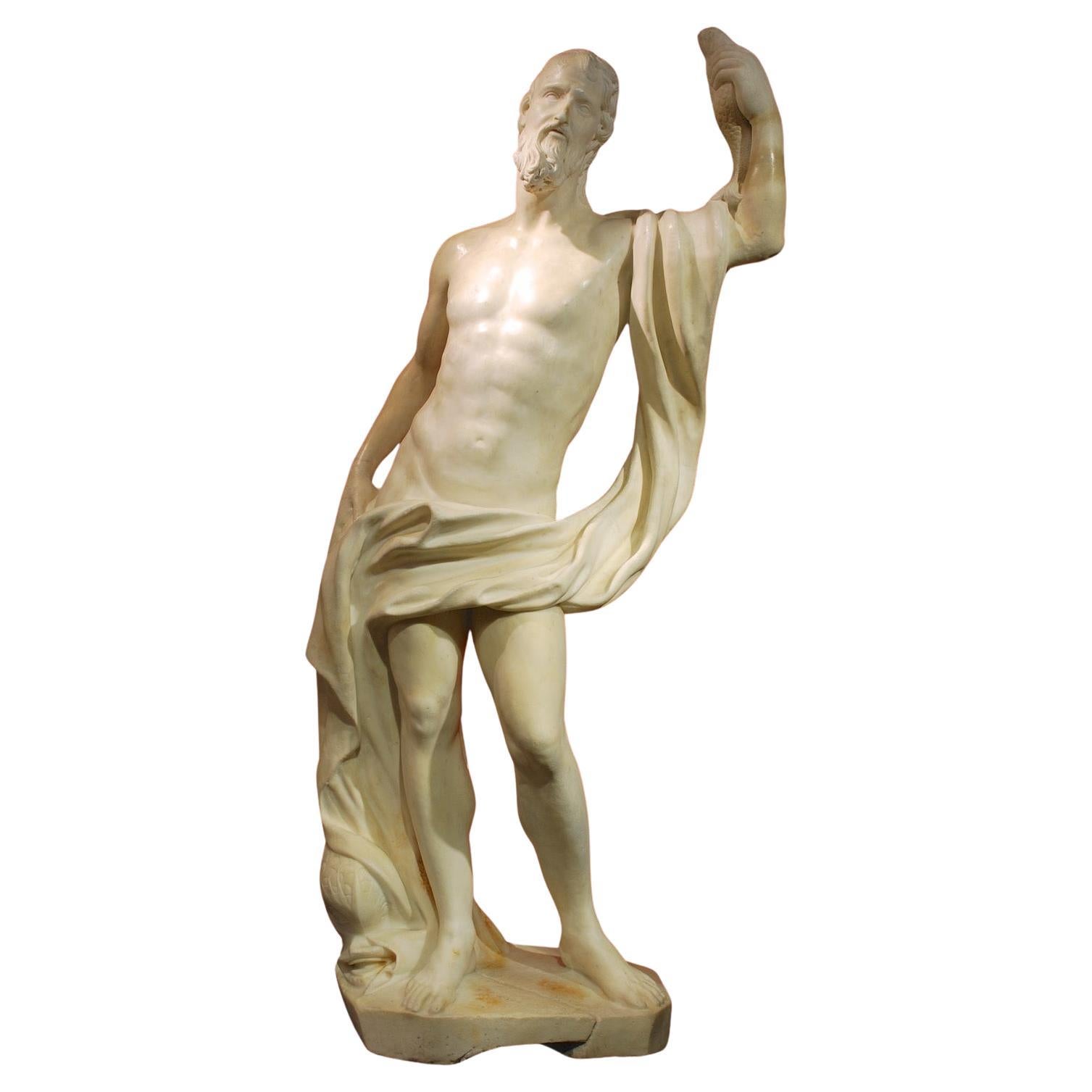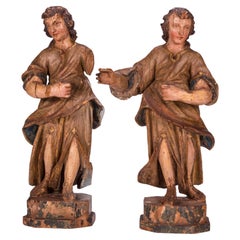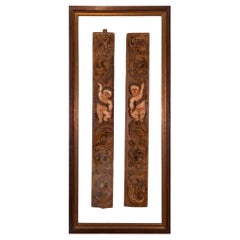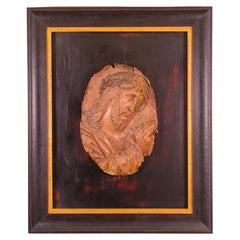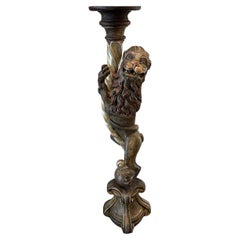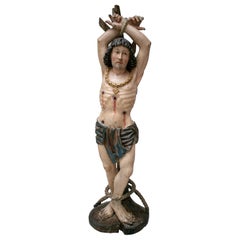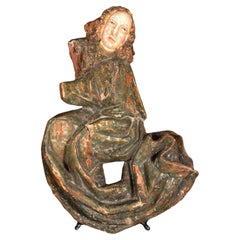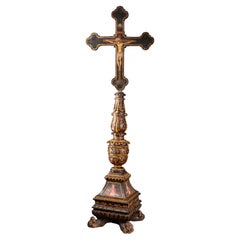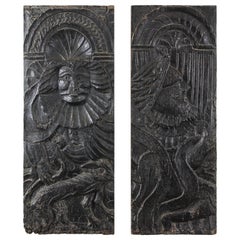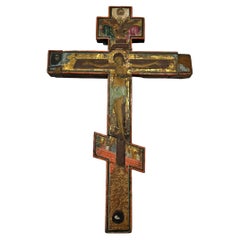
16th Century Hand-Painted and Carved Wood Russian Orthodox Cross
View Similar Items
Video Loading
Want more images or videos?
Request additional images or videos from the seller
1 of 15
16th Century Hand-Painted and Carved Wood Russian Orthodox Cross
Price:$9,050
$9,068List Price
About the Item
- Dimensions:Height: 14 in (35.56 cm)Width: 9 in (22.86 cm)Depth: 1 in (2.54 cm)
- Materials and Techniques:
- Place of Origin:Russia
- Period:
- Date of Manufacture:16th Century
- Condition:Wear consistent with age and use. Minor losses. Minor structural damages. Minor fading.
- Seller Location:North Miami, FL
- Reference Number:1stDibs: LU6132230689252
About the Seller
3.7
Vetted Professional Seller
Every seller passes strict standards for authenticity and reliability
Established in 2000
1stDibs seller since 2021
22 sales on 1stDibs
Typical response time: 1 hour
Authenticity Guarantee
In the unlikely event there’s an issue with an item’s authenticity, contact us within 1 year for a full refund. DetailsMoney-Back Guarantee
If your item is not as described, is damaged in transit, or does not arrive, contact us within 7 days for a full refund. Details24-Hour Cancellation
You have a 24-hour grace period in which to reconsider your purchase, with no questions asked.Vetted Professional Sellers
Our world-class sellers must adhere to strict standards for service and quality, maintaining the integrity of our listings.Price-Match Guarantee
If you find that a seller listed the same item for a lower price elsewhere, we’ll match it.Trusted Global Delivery
Our best-in-class carrier network provides specialized shipping options worldwide, including custom delivery.More From This Seller
View AllAngelic Carved Wood Sculptures, 16th Century
Located in North Miami, FL
Pair of 16th Century Italian carved polychromed angelic sculptures.
Category
Antique 16th Century Italian Renaissance Figurative Sculptures
Materials
Gold Leaf
$9,375 Sale Price / set
25% Off
Omnipresence of God, 16th Century, Carved Wood Panel
Located in North Miami, FL
A pair of 16th Century Spanish altar panels of Cherubs Representing the Omnipresence of God mounted on a Lucite panel with a double frame of hand-carved ...
Category
Antique 16th Century Spanish Wall-mounted Sculptures
Materials
Gold Leaf
Christ Carrying His Cross, 17th Century, Carved Wood
Located in North Miami, FL
17th Century Italian wood image of Christ carrying his cross to calvary mounted on a hand-painted black panel and framed with a modern gold gilded hand-finished wood frame.
Category
Antique 17th Century Italian Baroque Wall-mounted Sculptures
Materials
Gold Leaf
19th Century Russian Empire Carved Wood Candle Holder Sculpture
Located in North Miami, FL
19th Century Russian Empire carved wood candle holder / plant stand. It has been modeled after a lion perched on a ball holding a white gold...
Category
Antique 19th Century Russian Animal Sculptures
Materials
Wood, Giltwood
Sculpture of John The Baptist, 16th Century
Located in North Miami, FL
Early 16th Century Spanish gold gilded and polychromed carved wood sculpture of John The Baptist.
Category
Antique 16th Century Spanish Renaissance Figurative Sculptures
Materials
Gold Leaf
$10,000 Sale Price
20% Off
17th Century Carved Wood and Polychromed of Crucified Jesus on the Cross
Located in North Miami, FL
Introducing a captivating 17th-century Italian carved wood and polychromed, gold-gilded crucifix depicting Jesus on the cross. This remarkable piece...
Category
Antique 17th Century Italian Baroque Figurative Sculptures
Materials
Metal
$11,165 Sale Price
30% Off
You May Also Like
16th Century German Hand Carved Painted Wood St. Sebastian
Located in Marbella, ES
16th century German hand carved painted wood St. Sebastian.
Category
Antique 16th Century German Religious Items
Materials
Wood
Angel, Carved and Polychrome Wood, 16th Century
Located in Madrid, ES
Angel. Carved and polychrome wood. Century XVI.
Polychrome wood carving showing an angel, with the face facing the viewer and the body in pr...
Category
Antique 16th Century Spanish Renaissance Figurative Sculptures
Materials
Wood
renaissance wooden candelabrum and painted cross - Umbria, 16th century
Located in Bruxelles, BE
Base of a carved wooden candelabrum, polychrome and gilded; cross painted on both sides.
Umbria or Tuscany, 16th century
136 x 43,5 x 30 cm
(The cross and the base of the candelabrum were later assembled)
The base of the candelabrum is intricately carved and adorned with polychrome and gilded finishes. The shafts take on the shape of balusters reminiscent of ancient columns, feature ornate foliage decorations, garlands and winged cherub faces. The feet are crafted in the likeness of lion paws. The base is further embellished with depictions of four saint martyrs, among them Saint Barbara and Saint Catherine of Alexandria. The plasticity of the figures, outlined with strong contour lines, the clear and vibrant colors, are stylistic elements linked to the Umbrian tradition of the sixteenth century.The precisely defined and elegant drawing, along with the clear color palette applied with refined chiaroscuro modulations, became the signature of a style that would leave a lasting mark on the era to come. This is exemplified by a preference for vibrant, multicolored images, accentuated in this case by the use of red and pink in the saint's attire.
A notable addition, introduced later, is a polylobed cross painted on both sides. On one side, the Crucifixion is vividly portrayed:The treatment of the corpus itself is in line with High Medieval practice, emphasizing pathos by showing Jesus dead, his arms sagging from the weight of the body. The upper section displaying a pelican pecks at her breast to feed her young with her own blood; a symbol of the sacrifice of Christ on the cross whose body and blood similarly nourishes the celebrant during Mass.
The lower part depicts Golgotha. On the reverse side, the Resurrection is artistically presented in a Renaissance iconography, reminiscent of the renowned composition painted by Piero della Francesca, now housed in the Civic Museum of Sansepolcro. In terms of composition, with the frontal depiction of Christ holding the banner, this motif became particularly widespread in central Italy, spanning from Tuscany to Umbria throughout the 16th century..
The double-sided construction suggests that it may also have been carried in liturgical processions. In Umbria from the 14th century, the use of portable crosses painted on both sides had become a widespread practice, aimed at satisfying the monastic clientele that had significantly increased following the establishment of new religious communities.
The earliest surviving Tuscan painted crucifix represent Christ as Christus Triumphans, or the “Triumphant Christ” with his head up and eyes open. This form was supplanted in the 13th century with the Christus Patiens, or “Suffering Christ” type who is shown often with his head fallen on his shoulder and his eyes closed, as In our cross. The iconography of the suffering Christ appears to have developed out of a new interest in Christ’s human nature, the development of the feast of Corpus Christi and with increased importance given to the Eucharist. The process of humanizing the figure of Christ reaches its peak with the abandonment of all the previous expressive conventions in favor of more realistic details we can observe in this Crucifix, such as the swollen belly, the arms stretched to the limit of muscle tearing, the body falling heavily forward, the abundant blood on
the wounds, and the cross firmly embedded in the rock of Calvary.
It's worth noting that Renaissance candelabra...
Category
Antique 16th Century Italian Renaissance Figurative Sculptures
Materials
Wood, Giltwood
Renaissance Period Hand Carved Oak Panels, 16th Century
Located in Beuzevillette, FR
Set of two 16th century oak panels, one representing a character accompanied by a dog, the other a character in flames, probably saints.
These ...
Category
Antique 16th Century French Renaissance Figurative Sculptures
Materials
Oak
Saint Paul, Carved and Polychromed Wood. Spanish School, 16th Century
Located in Madrid, ES
Spanish school of the sixteenth century. "Saint Paul". Carved and polychrome wood.
Devotional image of a round piece carved in wood, polychrome and gilded, representing the Apostle ...
Category
Antique 16th Century Spanish Renaissance Religious Items
Materials
Other
16th Century Madonna and child wood carving
Located in Bakewell, GB
16th Century Madonna and child wood carving, retaining some original polychrome decoration
sizes 67 cms high, 30cms wide and 25 cms deep
Category
Antique 16th Century Figurative Sculptures
Materials
Wood
Recently Viewed
View AllMore Ways To Browse
Russian Orthodox Icon
Russian Orthodox Cross
Russian Icons And Religious Art
Orthodox Cross Gold
Antique Russian Orthodox Cross
Polychromed Wood Crucifix
Russian Crucifix
Russian Orthodox Crucifix
Antique Jesus Sculpture
Gold Sphinx
Thai Teak
Victorian Bronze Sculpture
Bronze Hermes
Climbing Sculptures
Marble Cupid
Plaster Sculpture Paris
Thai Siamese Carved Wood
Bronze Statuettes
